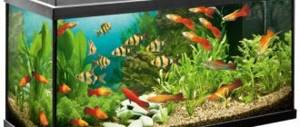Brief description of zucchini
The plant has quite impressive dimensions and can easily exceed a meter in height. Although it grows to the sides much better - this is due to the presence of a large number of fleshy, rough stems. The stems end in large leaves.
The fruits of the plant are usually quite large in size - from several tens of centimeters to half a meter (although they can reach a meter in length). And although zucchini can be colored yellow, white, green and black, the flesh of the fruit is usually white. It is this that is the main repository of the vegetable’s nutrients, but the peel is also edible (contains fiber).
Description of zucchini
Zucchini (Cucurbita pepo var. giromontina) is an annual herbaceous plant of the Pumpkin genus of the Cucurbitaceae family, a variety of pumpkin. Zucchini is native to northern Mexico, where it has been known for thousands of years. There is evidence that initially the Indians used only zucchini seeds for food, but later they appreciated the taste of the pulp of unripe fruits. A beautiful legend tells about how zucchini appeared among the Indians:It was a long time ago. Fishermen lived on the shores of the Atlantic Ocean, and in order to feed their families, they often and for a long time went into the ocean to catch fish, which served as their main food. The ocean was not always kind to people and did not always return their husbands to wives. Fearing for their men, the women prayed to God and asked him to send them fruit for food. And so that the flesh of the fruit is white and tender, like fish, and so that the taste of the fruit is similar to crab meat. And so that this fruit grows on earth. God heard the women’s prayers and sent them zucchini as a gift. Since then, Indian men began to go to the ocean for fish less often, and people received a tasty and tender vegetable.
Zucchini was brought to Europe from America, according to various sources, either in the 15th or 16th century. At first it was grown in the botanical gardens of Italy as an ornamental plant, and only in the 18th century it began to be eaten. Zucchini came to Russia in the 19th century from Turkey and Greece, where it got its name - “kabak”, which means “pumpkin” in Turkish.
A perennial herbaceous bush or climbing plant, grown as an annual in temperate zones. Zucchini has a powerful, grooved, faceted stem, erect in bush forms and creeping in climbing forms, five-lobed large leaves with thick petioles. The leaf color is green or dark green. Some varieties are characterized by the presence of yellow or white spots on the leaves, which are sometimes mistaken for a manifestation of the disease.
All parts are covered with prickly, spiny pubescence, which causes some inconvenience during harvesting.
The large, bright yellow, bell-shaped zucchini flower consists of 5 petals. The flowers are unisexual, male flowers on long stalks, female flowers on short stalks. Zucchini is a cross-pollinating plant, primarily pollinated by bees, bumblebees and wasps. The plant can be sprayed with a solution of sugar or boric acid to attract pollinating insects.
The fruit of the zucchini is the pumpkin; from a botanical point of view, it is related to the berry. The fruits are usually oblong, elongated or short, sometimes slightly curved, but they can also be round and even slightly ribbed. The fruit can be yellow, black, green or white. The color may be striped or spotted. The color of fruits at the stage of technical maturity (greens) may differ from the color of fruits at the stage of biological maturity, that is, fully ripened
The pulp is creamy or white, in the technical ripeness phase has a delicate taste; at the testes it is coarser, slightly sweet or unsweetened.
The seeds are light cream and have a lateral rim. Young fruits have a thin bark, while ripe ones have a hard bark.
Zucchini is a heat-loving plant. The minimum permissible temperature for seed germination is 9-11 ° C; at this temperature, zucchini germinate very slowly, but at a temperature of 25-27 ° C, which is optimal, seedlings appear in 3-4 days. Flowering begins a month after germination, and fruits form 7-10 days after flowering.
For best plant growth and fruit development, a temperature of 23-25 °C is required. Temperatures up to 18 °C are acceptable, but at 10-12 °C plant development slows down. Zucchini can withstand a short-term drop in temperature to 5 °C, but at a temperature of 1-2 °C it dies. Zucchini does not tolerate high temperatures (30 °C and above), the fruits become smaller and there are fewer of them.
Zucchini sticks breaded with cheese
Ingredients:
- Zucchini – 2–3 pcs.
- Parmesan – 100 g
- Egg – 2 pcs.
- Breadcrumbs – 1 cup.
- Olive oil – 2–3 tbsp. l.
- Spices – to taste (ground black pepper, Provençal herbs, dried garlic)
- Salt - to taste
Preparation:
Rinse the zucchini under running water, wipe them dry and cut off the ends on both sides. Cut them into bars 1.5 cm wide.
Place beaten eggs in one plate, and in another mix crackers, finely grated cheese, spices, and salt.
Dip the zucchini bars in the egg mixture, then roll them in the dry mixture. Place the zucchini prepared in this way on a baking sheet lined with baking paper and greased with oil, and sprinkle olive oil on top. Bake in the oven for 10–15 minutes at 220°C, serve hot.
Zucchini in batter
Ingredients:
- Zucchini – 2–3 pcs.
- Egg – 2 pcs.
- Flour - ½ cup.
- Pepper – ¼ tsp.
- Breadcrumbs – 1 cup.
- Oil - to taste
- Salt - to taste
Preparation:
Cut the zucchini into slices. Place beaten eggs, flour with pepper and breading in wide containers (plates, bowls). Dip a zucchini circle in flour, then in egg and breading. Fry in oil on both sides.
These zucchini are best served with sauce.
Diet zucchini pancakes
Ingredients:
- Zucchini – 350 g
- Sweet pepper – 50 g
- Egg – 1 pc.
- Flour – 50 g
- Garlic – 1 clove
- Salt, pepper, herbs - to taste
Preparation:
We clean and grate the zucchini, chop the greens and add to the zucchini, add an egg, pressed garlic and finely chopped pepper.
This whole mass must be mixed with flour and spices.
Fry the pancakes in a well-heated frying pan on both sides until cooked.
Stuffed zucchini
Ingredients:
- Minced meat – 400 g
- Zucchini – 1 pc.
- Egg - 2 pcs.
- Milk – 3 tbsp. l.
- Flour – 2 tbsp. l.
- Salt - to taste
Preparation:
Cut the zucchini into circles and remove the skin and core. Fill the zucchini rings tightly with minced meat.
For the batter, mix milk with eggs and salt.
Each circle of minced meat should be rolled in flour.
Then dip them in batter and fry in a hot frying pan until the meat is cooked, about 4-5 minutes on each side.
Best served hot.
Bon appetit!
Useful properties of zucchini
Zucchini is an easily digestible vegetable with a large amount of vitamins and minerals. It has a beneficial effect on the health of the body and does not cause any harm. Due to this, it is often used in baby food. However, the vegetable is useful not only for children, but also for adults. So, zucchini brings the following benefits:
- — Strengthens the cardiovascular system due to the high content of potassium and magnesium. It also improves blood properties due to the presence of iron.
- — Improves the functioning of the liver and kidneys, relieving them and helping to carry out their function.
- — Improves the functioning of the gastrointestinal tract due to its fiber content.
- - Strengthens the immune system.
- — Removes toxins from the body, which is why it is even recommended for use after poisoning (when the first cleansing of the body has been performed).
- — Has a beneficial effect on the condition of the skin, rejuvenating it and helping to get rid of cellulite.
It is recommended to use zucchini for diseases of the organs and systems listed above. And also for diabetes, obesity, arthritis, atherosclerosis and many other diseases. In general, if you like a vegetable, eat it for your health, it will only bring benefits.
Preparatory work
Selection of materials
When planning an autumn craft from vegetables and fruits, you should remember that such a thing will not be durable. However, by choosing products with a long shelf life and unpretentious storage conditions, there is a chance to maximize the life of the product. Potatoes, zucchini, carrots, and apples are perfect for such products. Having all this at hand, and with a little more effort and imagination, you can build figurines of all kinds of colors, animals, equipment, paintings or panels. Crafts made from vegetables will delight not only children, but also the most serious adults.
Preparation of materials
Having decided to create such a craft, it is important to imagine what the composition as a whole will look like, perhaps even make a sketch and draw all the details. This determines what technique the work will be performed in. And there are many of them:
- You can cut figures and objects from vegetables using a knife
- you can assemble structures from individual elements, like from parts of a construction set
- There is also a technique for creating paintings and panels, the raw materials for which are fruits and vegetables
- art of cutting vegetables and fruits
- art installations made by adding additional decorative elements look great
Zucchini will be a universal raw material for any of these techniques. It is unpretentious, can be stored for a long time and, like a blank canvas, can become the basis for any idea. Before you begin, you should carefully evaluate the appearance of the vegetable, its size and shape, and check for damage.
After which it should be washed in running water and wiped with paper towels. Depending on what idea will be brought to life, the zucchini can be rid of seeds and divided into individual elements. We also don’t forget to prepare tools for work such as a knife, thread, toothpicks, and additional decor.
Zucchini: contraindications
In general, zucchini is harmless to people because it does not contain any dangerous substances. But even beneficial substances in large quantities are contraindicated for people with certain diseases and disorders of the body. Therefore, the vegetable is not recommended for people with the following diseases:
- - Kidney failure.
- - Stomach ulcer, gastritis or increased stomach acidity.
- - Inflammation of the gastrointestinal tract.
- - Gallbladder diseases.
The art of cutting vegetables - carving
But don’t assume that creating crafts from zucchini and other vegetables and fruits can be a fun activity only for children. There is a complex but incredibly beautiful technique for cutting vegetables called carving. To create a unique pattern or design, the master, using a special knife, removes excess material in a special way, planing and giving the desired shape to the original product.
As a result of such actions, a simple vegetable or fruit turns into a masterpiece that combines two types of art: cooking and sculpture. Such a master’s creation will be able to decorate and make any table unique. To create complex shapes you need to have certain skills and a complex set of tools. However, having mastered the basic elements of carving, you can have fun in the kitchen, entertaining children with funny animal faces carved on the surface of vegetables and fruits.
Advice. For any craft, it would be a good idea to make a base or backing that should correspond to the theme of the work. This move will help give the composition a finished look.
Just delving a little deeper into the topic of creating autumn crafts from zucchini, we can conclude that this is an interesting and addictive activity for both children and their parents. If you decide to spend a family evening doing this activity, then rest assured that you will not only get a great way to unwind, but also a lot of positive memories for a long time.
Zucchini locomotive
You can play with this train for a couple of days. Therefore, your child will accept the offer to make such a zucchini craft with his own hands with pleasure.
These locomotives can be completely different. You can choose complex options, or make an easy craft from vegetables and zucchini. Vegetables are fastened together using toothpicks. For such a locomotive you will need not only zucchini, but carrots, melon, and green tomatoes.
For the stability of the locomotive, you can slightly cut off the bottom of the zucchini
Steam locomotive from zucchini: how to make
We will need:
- Zucchini (long)
- Carrot
- Knife
- Toothpicks
Cut the vegetable into three parts. The first is equal to approximately half. Cut the second half in half again.
We cut small indentations in two parts of the zucchini.
Cut out wheels from the third part of the zucchini and carrots.
Cut a frame for a window from a carrot
Attach the wheels with a toothpick
We will also use toothpicks to attach the cabin to the base of the locomotive.
Another locomotive with a trailer
Crafts from zucchini step by step: Chipolino by car
We will need:
- Zucchini
- Carrot
- Cucumber
- Bulb
- Toothpicks
- Scissors
We cut a notch in the zucchini for the driver. Make 4 wheels out of carrots
Attach the wheels with toothpicks. Cut two parts from the cucumber: an oblique cut on one side and a straight cut on the other. From this we will get the body of the hero.
We put the body in the car and pierce the onion with a toothpick
Place your head on the body. Decorate the bulb with carrot decor, the car with headlights and steering wheel. To prevent toothpicks from sticking out, trim the ends with scissors.
We cut Chipolina's arms out of the zucchini and attach them to the body
How to store zucchini at home?
Harvesting of ripened vegetables can be done from mid-summer to the onset of the autumn season. Choose zucchini twice a week. It is not recommended to allow the fruits to outgrow and reach a length of fifteen to twenty centimeters.
When fresh, it is best to store zucchini in the refrigerator in the quantity necessary for fresh consumption until the next harvest. It is better to preserve the rest of the crop so that the vegetable retains the maximum amount of nutrients.
The main advantage of the Video is reviews from gardeners. Everyone who grew this variety was happy with the rich harvests.
Video
What is the difference between zucchini and zucchini?
Zucchini is a zucchini native to Italy. The name “zucchini” (Italian zucchini) is a diminutive of the Italian word zucca, which means “pumpkin”.
The first and main difference between them and other zucchini is the color. Zucchini are dark green or yellow in different shades. In this case, vegetables can be plain, striped or spotted. In addition to the above colors, the color of zucchini can be white, orange, or light green.
The difference between zucchini and zucchini also lies in the timing of ripening and fruiting. Zucchini ripen earlier, zucchini - later. At the same time, the fruiting period of zucchini is longer.
Another difference between zucchini and squash is the size of the fruit. Basically, zucchini are small in size, while some varieties of zucchini can reach a meter in length and weigh 30 kg.






